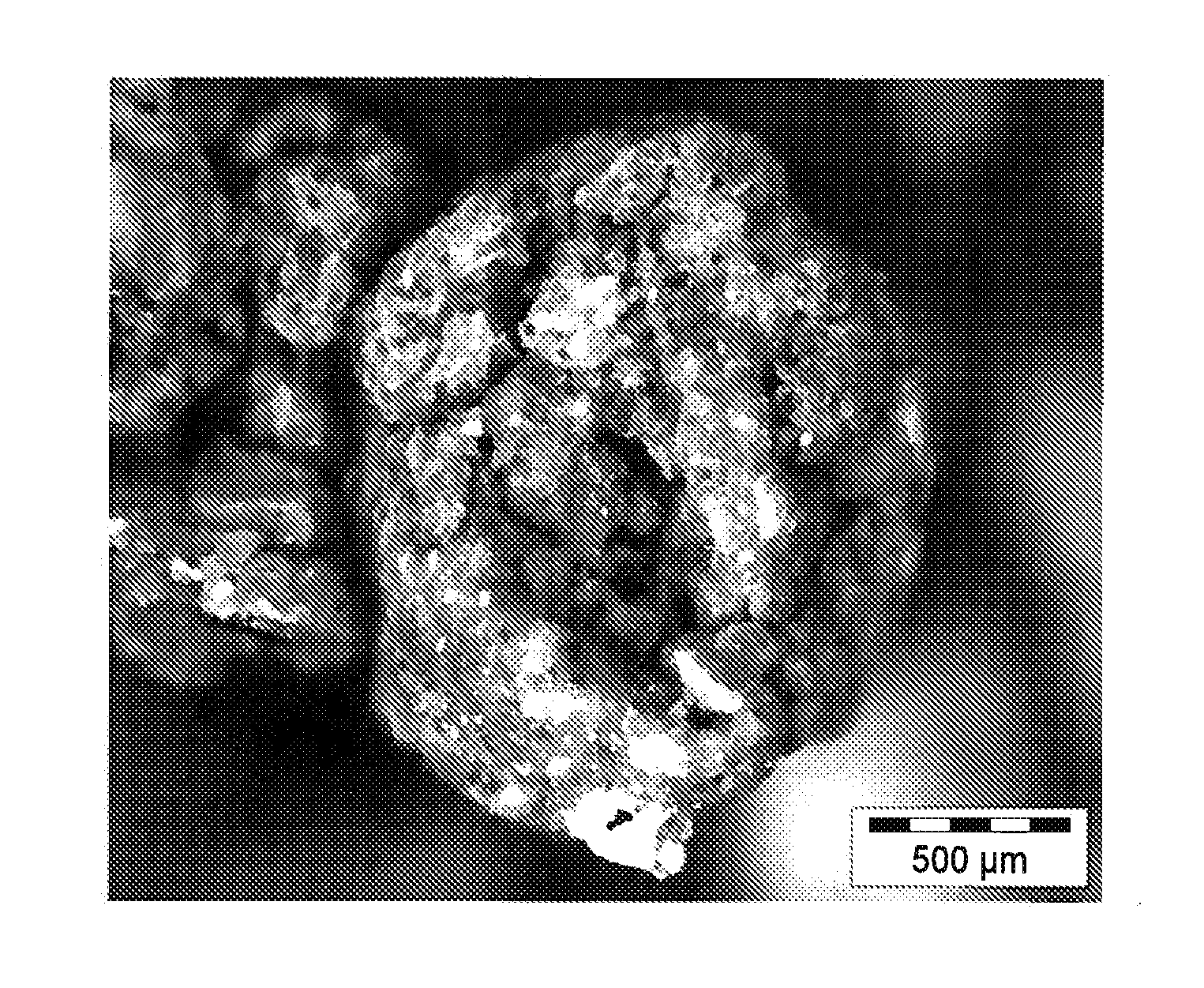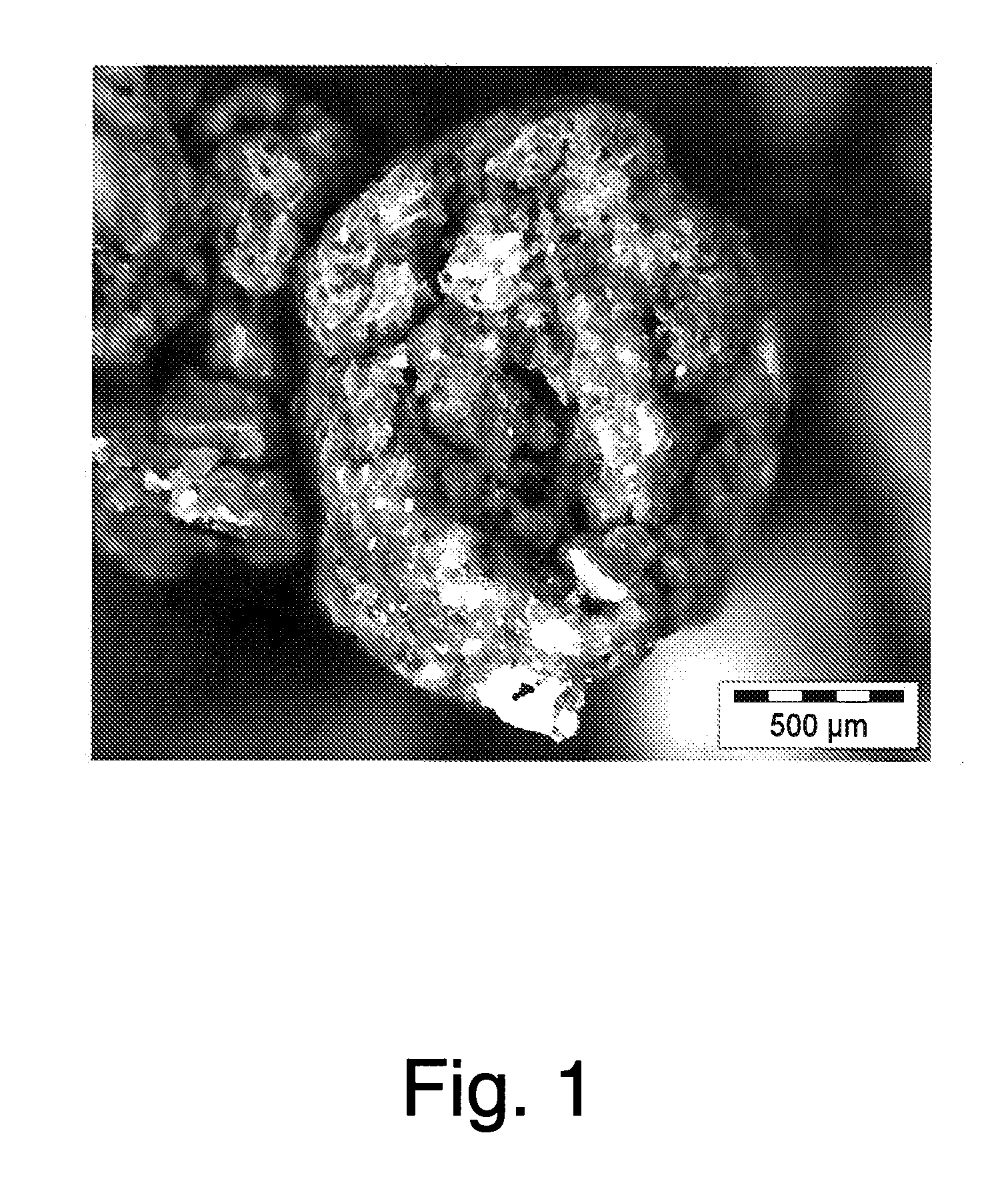Puffed bentonite litter
- Summary
- Abstract
- Description
- Claims
- Application Information
AI Technical Summary
Benefits of technology
Problems solved by technology
Method used
Image
Examples
example
[0019]Sodium bentonite was first treated in one of three different ways:[0020]1) No treatment[0021]2) Soaked with a water mist from a spray trigger, where particles were visibly darkened and all water was completely absorbed by the particles. The sample was allowed to sit in air for about 10 minutes[0022]3) Soaked for 16 hours in a 10% (wt. / wt.) aqueous solution of NH4Cl (50 g of bentonite soaked in 200 g of solution)
[0023]Approximately 2.3 g of each sample (with treatments 2 and 3 being wet) were placed in 50 mL ceramic crucibles. The samples were then placed in a muffle furnace at 850° C. for 2 hours. The samples were then removed and allowed to cool to room temperature for about 16 hours. The samples were exposed to ambient air during cooling.
[0024]Original (natural) density of Sodium Bentonite=0.9-1.0 grams / cm3
[0025]Density of Samples 3=10% Aqueous Ammonia Chloride Solution Treated Bentonite=0.4 grams / cm3
[0026]Density of Samples 2=Water Treated Bentonite=0.8 grams / cm3.
[0027]Ab...
PUM
| Property | Measurement | Unit |
|---|---|---|
| Temperature | aaaaa | aaaaa |
| Percent by mass | aaaaa | aaaaa |
| Percent by mass | aaaaa | aaaaa |
Abstract
Description
Claims
Application Information
 Login to View More
Login to View More - R&D
- Intellectual Property
- Life Sciences
- Materials
- Tech Scout
- Unparalleled Data Quality
- Higher Quality Content
- 60% Fewer Hallucinations
Browse by: Latest US Patents, China's latest patents, Technical Efficacy Thesaurus, Application Domain, Technology Topic, Popular Technical Reports.
© 2025 PatSnap. All rights reserved.Legal|Privacy policy|Modern Slavery Act Transparency Statement|Sitemap|About US| Contact US: help@patsnap.com


